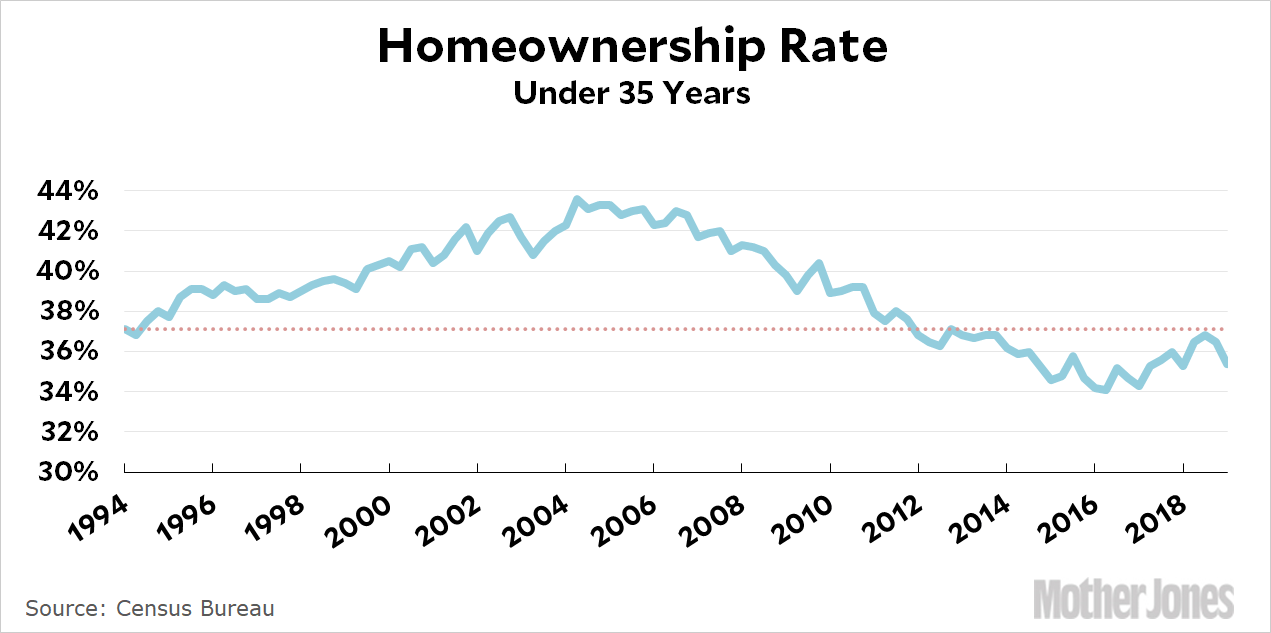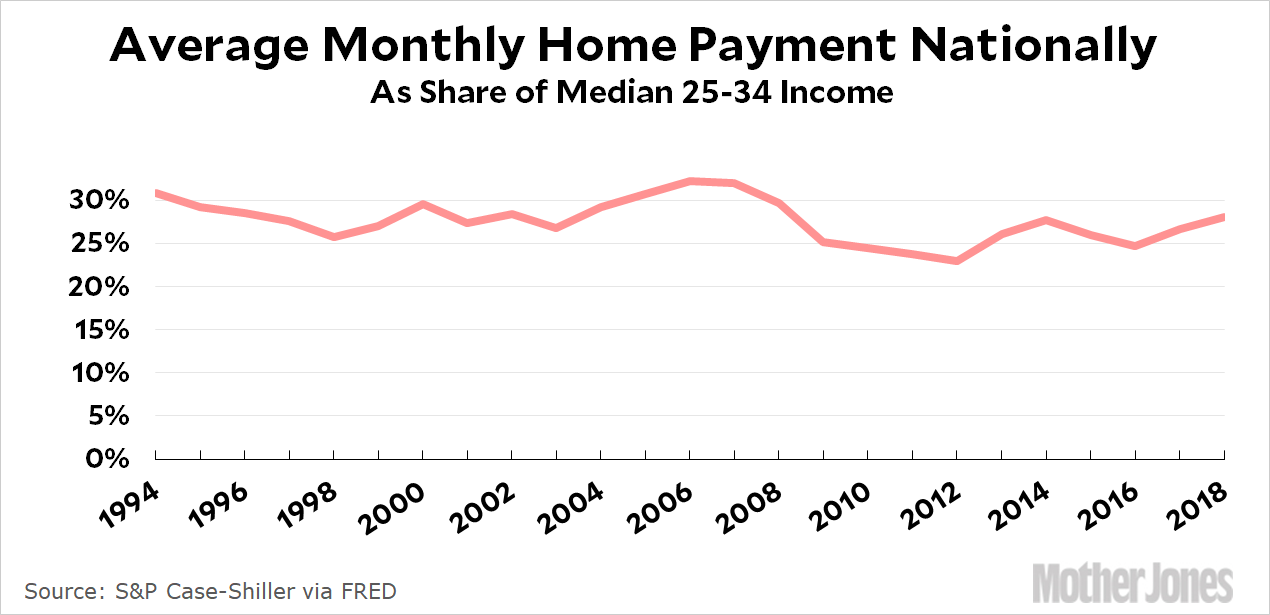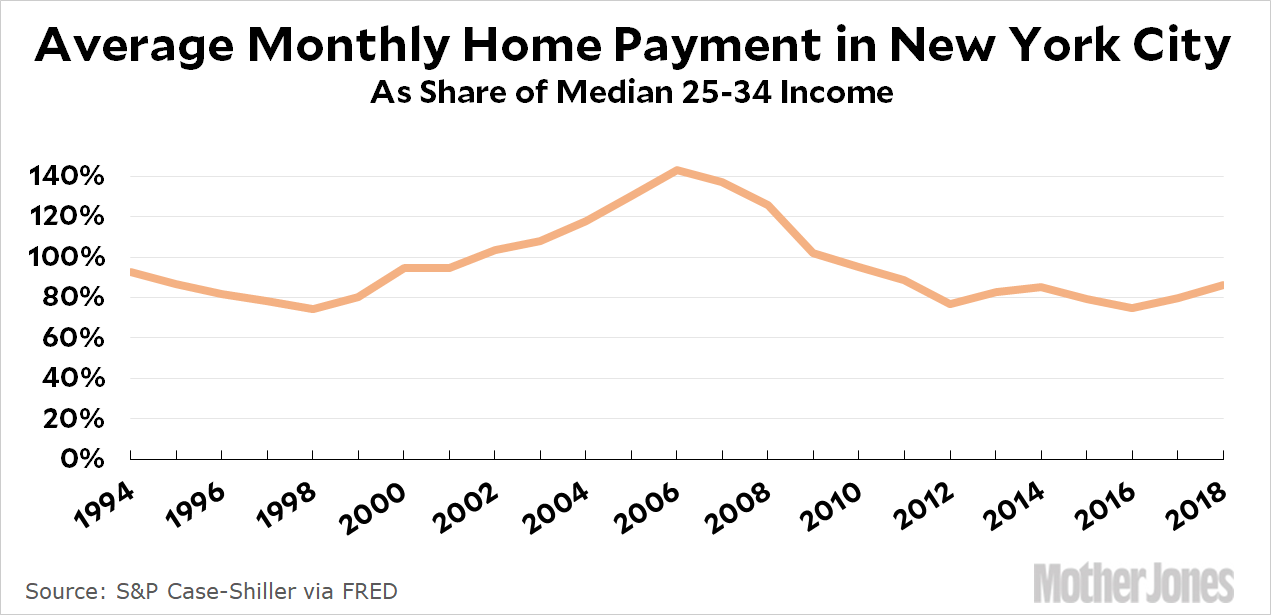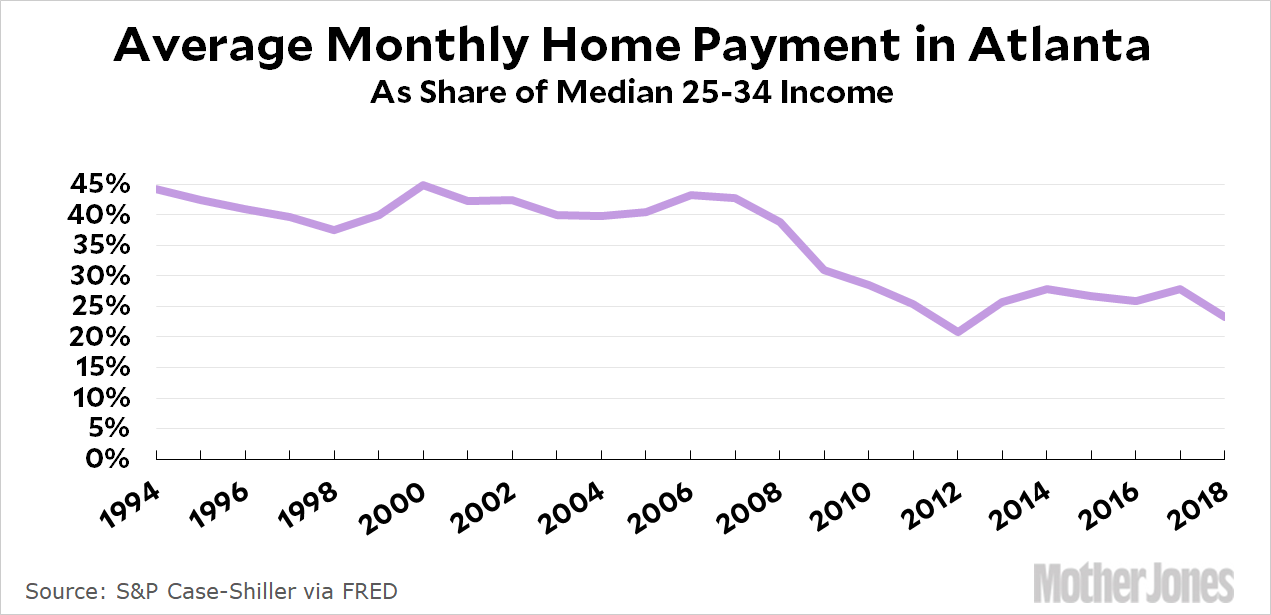Somebody asked recently about the homeownership rate among millennials. I’ve posted about this before, but the chart had too little detail to really see what’s going on. So here it is:

You might be surprised that the homeownership rate among young familes is nearly the same as it was in 1994. But you shouldn’t be. It’s true that home prices have gone up a lot in the past couple of decades, but remember two things: (a) prices have truly skyrocketed only in a small handful of hot cities, and (b) mortgage interest rates have declined a lot. Back in 1994 your 30-year loan came with an interest rate of over 9 percent. Today it’s a bit over 4 percent.
When you take mortgage rates into account and look at monthly payments as a percent of income, prices have been steadier than most people think. Here it is nationally:

The average monthly home payment has stayed remarkably stable since 1994. Here are average monthly payments for three big cities:



In order to calculate monthly payments as a share of income, I used income figures that are averages for the whole country since that’s all I’ve got. However, it’s worth noting that average incomes are higher in big cities, so the percentage of income it takes to buy a home is actually significantly less than these charts show. But the important thing isn’t really the absolute percentage anyway, it’s the change over time, and these charts show the change accurately.
Bottom line: Average monthly payments are up about a third in Los Angeles, but down a bit in New York and down a lot in Atlanta. With the exception of a few super-hot cities like San Francisco and Seattle, young buyers today face about the same cost to buy a home as young buyers of 25 years ago. So it’s not that big a surprise that homeownership rates among millennials aren’t really very different than they were among Gen Xers in the 90s.
POSTSCRIPT: Home prices are based on HUD data for the national series and on Case-Shiller indexes for the three city series. I assume a 10 percent down payment. Mortgage rates are from Freddie Mac. Median household income for 25-34 year-olds is from the Census Bureau.













